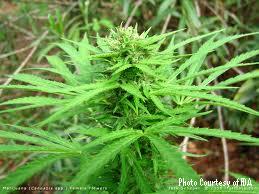
There has been a recent movement within the states to legalize marijuana for medical uses. Already 16 states and Washington D.C. have legalized it as a medical treatment.
The people who support the movement argue that instead of being classified as a Schedule I drug, which means that it has no medical use and is dangerous. Those who encourage the movement would like it to be classified as a Schedule II drug, which would make it legal for medicinal purposes. Other Schedule II drugs include morphine, some forms of cocaine, and some forms of opium. Basically Schedule II drugs are drugs that can be used as painkillers and have a high potential for abuse.
Those who oppose the use of marijuana in any use argue the obvious reasons: That there are detrimental health effects, and that the use of it for medical purposes will make it easier for people to procure it for recreational purposes.
Marijuana has fewer side affects than many people attribute to it. While it does have negative side affects, they only come after years and years of use. According to the National Institute on Drug Abuse (NIDA) and the National Institutes on Health (NIH) only 9 percent of marijuana users become addicted. Those who do become addicted, it only takes about two weeks for withdrawal symptoms to subside. Some studies have also linked Schizophrenia and depression to marijuana abuse, but no study has been conclusive. It also has adverse effects on the lungs, but typically no more so than tobacco smoke.
All of that sounds very bad, but it’s no worse than many other schedule II drugs, such as cocaine. Chronic users of cocaine can become malnourished and blood vessels will often become blocked, leading to a lack of oxygen in the brain and no blood flow to the heart. This, in turn, can lead to stroke or heart attack. Cocaine is highly, highly addictive and is nearly impossible for people to quit on their own. Historically (and in many smaller countries) coca leaves have been used as a remedy for hunger and is currently used mainly as a local anesthetic.
Basically cocaine is addictive to anyone who tries it, while marijuana is addictive in only 9 out of every 100 cases.
The main use of marijuana as a medical treatment is to help cancer patients through chemotherapy. The drug helps to decrease nausea that the poison in chemo will inevitably cause. More often than not it will also help people with anxiety that often comes along with having cancer. It also increases appetite which is another big issue that comes along with chemotherapy.
In my opinion it seems bizarre that we prohibit people from using medical marijuana, but that we are willing to let people use cocaine, a highly addictive drug as an anesthetic. While I can see the reasons behind keeping marijuana illegal for any use, in my opinion some people really need the help it can provide.
Those who dispute the use of medical marijuana argue that testing has been inconclusive at best. There have not been many tests in the way of marijuana because so far it has not been shown to actually cure anything, just alleviate pain and other side affects of debilitating illnesses.
My mother is a nurse at a cancer clinic, so I know how much some people suffer through chemo. The people who would most benefit from the use of medical marijuana are those who have stage four cancers and are only hoping that chemotherapy will somehow help cure their cancer. However at stage four, most people are hoping for a miracle, and most doctors are just waiting until the patient has to go on hospice, which is where the patient is so sick they need to be watched constantly. These patients don’t need the pain and nausea that comes with their last months and if they were able to use marijuana as a pain killer, the risk of them becoming addicted or it giving them lung cancer is insignificant.
Leave a Reply